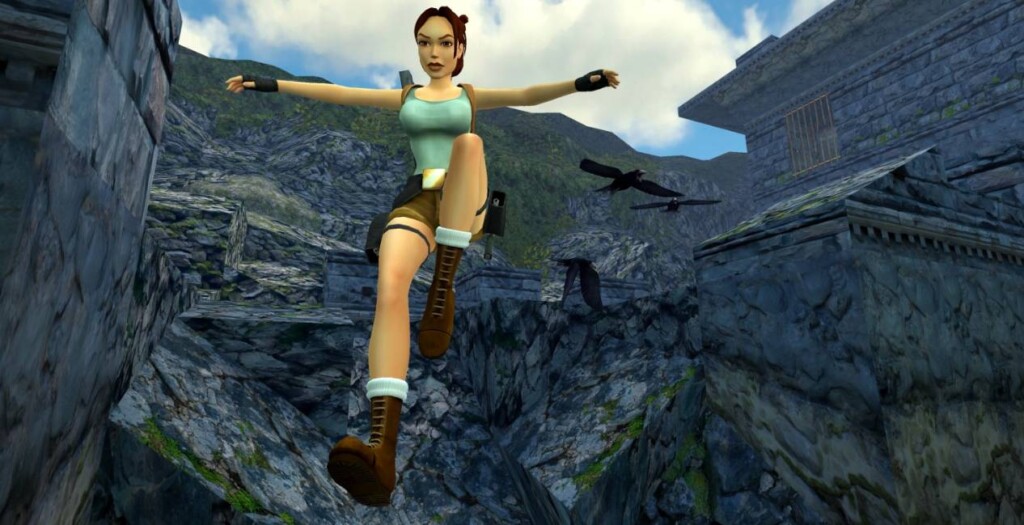The first three Tomb Raider games debuted over 20 years ago and the series has sorely needed a makeover. The original games featured tank controls, now-archaic graphics, and severely limited movement. Aspyr stepped up to the challenge and has added all new features to the Tomb Raider I-III Remastered collection. The franchise has been a massive icon in gaming since the 1990s. Since its debut, the series has spawned several sequels, spinoffs, and other media. Now, Crystal Dynamics and Aspyr are taking the series back to its roots by remastering the first three games for modern audiences. The result is mixed at best.
Tomb Raider I sees Lara Croft, an adventuring archaeologist, go on a quest to uncover an ancient mysterious artifact called the Scion. The story takes Lara across several locations as she navigates perilous environments, battles wildlife and enemies, finds hidden secrets, and solves intricate puzzles. Players explore several tombs, crafted surprisingly intricately, even by today’s standards. The title is still highly respected today because of the game’s emphasis on exploration and discovery and its creative 3D environments.
In Tomb Raider II, Lara Croft embarks on a quest to recover the mythical Dagger of Xian. This is an artifact said to possess the power to turn its wielder into a dragon. The journey takes Lara across various exotic locations, including the Great Wall of China, Venice, and Tibet. She battles rival treasure hunters and ancient guardians to uncover the dagger’s secrets.

The sequel builds upon the successful formula of its predecessor. It offers players complex puzzles, intense action sequences, and a diverse range of locations to explore. Each comes with unique challenges and hazards. This ranges from underwater caverns to snowy mountain peaks. The game also introduces new weapons, ammo, enemies, and more. It’s a more expanded and unique version of the first game.
In Tomb Raider III, Lara Croft goes on a worldwide adventure to recover mysterious artifacts that could spell doom to humanity. The quest takes her across various exotic locales again. She travels the jungles of India and the streets of London, uncovering the mysteries surrounding the ancient artifacts.
The overall gameplay in III doesn’t change significantly from the previous title. However, it allows players to choose their own path through multiple interconnected levels. Each level is filled with challenging puzzles, hidden secrets, and dangerous enemies, resulting in a diverse and engaging gameplay experience.
Upon starting the first game in the collection, you can instantly tell how much has changed in the remastered version. The remaster now gives players enhanced lighting both in and out of tombs, more dynamic colors, better reflections, and more detailed 3D models. The remasters also add a cool new feature that lets players switch between the old and remastered look with a single push of a button. This new inclusion helps players compare the new and old looks. It also allows returning players to stick to the old look while playing on new systems if they choose to.

Tomb Raider I-III Remastered also includes critical quality-of-life updates. This includes more stable frame rates and the all-new Modern control scheme, which lets players move more freely in whichever direction with the analog sticks. These settings are also all adjustable with button mapping and sensitivity control.
Unfortunately, hours into the games, you will likely realize that these new features don’t always work as intended. Throughout the game, players will find that they’ll have to traverse through narrow halls and tight spaces. This can be a nightmare due to the shaky, unreliable camera. Trying to turn corners or leap between ledges can feel like pulling teeth if they’re too close together. Moreover, the game can be incomprehensibly stiff and loose in the most awkward moments.
One such moment is trying to get on the dreaded zip lines. It’s a nightmare. You have to be right in front of them and as close to them as possible, or you won’t be able to latch on to them. You could spend hours trying to get onto zip lines, most likely falling to your death many times in the process. Additionally, no amount of adjusting the sensitivity helps with this. Increasing or decreasing it only seems to have made the whole ordeal take longer.
Another odd thing Tomb Raider I-III Remastered excludes but needs is a tutorial mode. At the very least it needs on-screen instructions. This is egregious because the game starts you with the outdated Tank controls, which utilize directional buttons to move Lara. Newcomer players might be led to confusion. One of the only two ways to learn the game’s controls is by heading to the menu, swapping it to Modern settings, and then checking how they work by navigating to the button mapping option.

The other much simpler way is to head to Lara’s home in the first game (which the game doesn’t tell you to do) and play the actual tutorial. Even then, it won’t tell you the actual buttons for jumping, shooting, rolling, and more. However, it’s not all bad. Each entry after the first game launched with light new additions to gameplay. In Tomb Raider I, players have to run up to a ledge, jump, and then hold a button to grab onto it to climb it. In subsequent games, however, players only need to jump up, and Lara will automatically grab the ledge, which is great. Tomb Raider III also added crawling, which lets players crawl through narrow spaces and adds more variety to gameplay.
This Tomb Raider remaster also includes the DLC from each game. The DLCs are less narrative-focused and shorter but feature much longer levels, new secrets, puzzles, and more. Additionally, players can traverse levels with many options because of how each level is structured. All these make the DLC more challenging and fun to play.
Overall, Tomb Raider I-III Remastered is a mixed bag of a remastered bundle. While offering players new quality-of-life updates and great new features, the experience is marred by frustrating movement and an unreliable camera. Until potential future updates, it’s hard to recommend the bundle to anyone but die-hard Tomb Raider fans and players with intense curiosity.
Tomb Raider I-II-III Remastered is available now on PlayStation 5, Xbox Series X/S, PlayStation 4, Xbox One, Switch, and PC via Steam.
Tomb Raider I-III Remastered
-
Rating - 5/105/10
TL;DR
Tomb Raider I-III Remastered is a mixed bag of a remastered bundle. While it offers players new quality-of-life updates and great new features, the experience is marred by frustrating movement and an unreliable camera.





